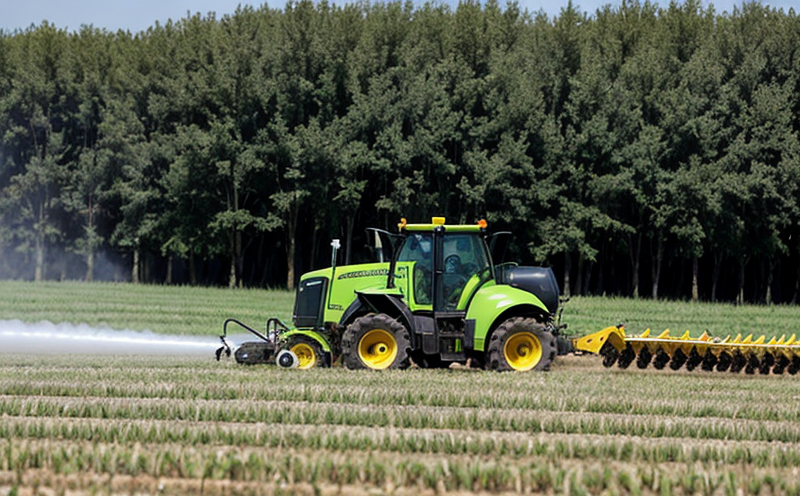Thiophanate-Methyl Residue Testing in Crops
Thiophanate-methyl, a widely used fungicide, is known for its effectiveness against many fungal diseases. However, the residues of thiophanate-methyl in crops can pose significant risks to human health and the environment if not properly managed. This service aims to ensure that crop produce meets regulatory standards by detecting trace levels of thiophanate-methyl residue through meticulous testing.
Our laboratory utilizes advanced analytical techniques such as Liquid Chromatography-Mass Spectrometry (LC-MS) and Gas Chromatography-Mass Spectrometry (GC-MS). These methods allow for the precise quantification of thiophanate-methyl residues down to parts per billion, ensuring compliance with international standards.
The testing process begins with thorough sample preparation. The crops are first homogenized to ensure uniformity and then extracted using appropriate solvents. Post-extraction, clean-up steps such as solid-phase extraction (SPE) are employed to remove interfering compounds, ensuring accurate measurement of thiophanate-methyl residues.
Once the samples are prepared, they undergo qualitative and quantitative analysis via LC-MS or GC-MS. The results are then compared against established limits set by regulatory bodies such as the European Union (EU), United States Environmental Protection Agency (EPA), and World Health Organization (WHO).
This service is crucial for quality managers, compliance officers, and R&D engineers who need to ensure that their products meet strict regulations. By leveraging this expertise, they can mitigate risks associated with contaminated produce, thereby maintaining the integrity of their brand.
| Applied Standards |
|---|
|
Applied Standards
To ensure the accuracy and reliability of our testing, we adhere to several international standards. These include:
- ISO 17025:2017 – General requirements for the competence of testing and calibration laboratories
- ASTM D6329-18 – Standard practice for chemical analysis by gas chromatography/mass spectrometry (GC/MS)
- EN 14312:2005 – Determination of pesticide residues in foodstuffs
These standards provide a robust framework that guarantees our methodologies are up-to-date and compliant with global best practices.
Benefits
- Precision: Detect thiophanate-methyl residues down to parts per billion, ensuring accurate results.
- Compliance: Meet stringent regulatory requirements set by various international bodies like EU, EPA, and WHO.
- Risk Mitigation: Protect your brand's reputation by avoiding contaminated products reaching the market.
- Quality Assurance: Ensure that all processed crops meet high-quality standards for consumer safety.
- Efficiency: Speed up product certification processes through reliable testing results.
The ability to detect even trace amounts of thiophanate-methyl residues is paramount in maintaining the integrity and safety of agricultural produce. Our service provides peace of mind, knowing that your products are safe for consumption.
Competitive Advantage and Market Impact
Adopting thiophanate-methyl residue testing can significantly enhance a company's reputation in the market. By ensuring that your products are free from harmful residues, you can:
- Earn trust from consumers who prioritize health and safety.
- Gain competitive edge over rivals who may not adhere to strict standards.
- Avoid costly recalls or legal issues resulting from non-compliance with regulations.
Beyond immediate benefits, consistent adherence to these testing protocols can lead to long-term sustainability improvements, contributing positively to environmental conservation efforts and public health.





